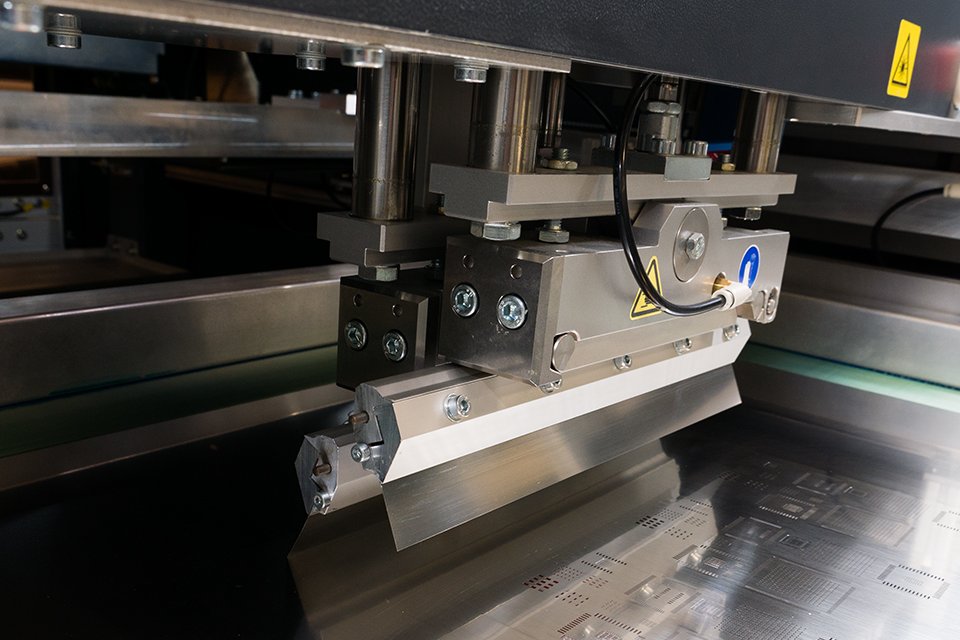Technology Stencil Printing
Stencil Printing
Process optimization in Electronics Production

Stencil printer with self-control thanks to fully integrated solder paste inspection
Almost 70% of all process errors in the SMT line are caused by stencil printing. Yet most errors can be corrected in a cost-saving manner. The Ersa VERSAPRINT 2 printers use modern camera technologies for fast setup and full-surface solder paste inspection directly in the printer. The intuitive user interface ensures space-saving operation. With “features on demand”, the VERSAPRINT 2 is flexibly adaptable to special requirements.

The Stencil Printing Process
Printing solder paste in form of solder paste deposits on PCBs is – like reflow soldering – an elementary component of modern SMT manufacturing technology. Solder paste, consisting of solder powder, flux and pasty components, moves a squeegee over a stainless steel stencil in the solder paste printer, thus filling its openings. After the printing process, the solder paste is located in exact quantity on the component pads of the PCB, which is precisely fixed under the stencil. In the subsequent process, only the SMT components have to be loaded into these solder paste depots, the later solder joints.
Technology Highlights
2D SPI directly after the printing process

- LIST camera for 100% inspection in process cycle
- Low space requirement in the production line for printing and inspection
- Closed-loop process control for stencil printing and post-print inspection
- Easy programming and operation
- Stencil printing and SPI in one machine
3D SPI for inspection of complex boards

- VERSAPRINT stencil inspection detects defects before they occur
- Zero point measurement of unprinted PCB any time before printing
- Integrated closed-loop function for print offset
- One integrated software platform for printing and inspection
- Maintenance and servicing for one press, one contact for both processes
Optimal evaluation and data analysis

During 3D inspection, the VERSAPRINT 2 evaluates the following solder paste print characteristics: volume, area, height, short and offset. If the system detects deviations in the solder paste print from the specifications, a 2D image of the affected area is also captured for better display and analysis by the operator.
In addition, the operator can rotate and zoom in on the 3D image of the defect found as required to perform a reliable analysis. Height profiles are displayed in color-coded form. Borderline areas are colored yellow and red. The critical point for a height measurement is the definition of the zero point. At the time of measurement, the pad area representing the zero position is occupied by the solder paste. Therefore, it is common practice in today´s SPI systems to measure a limited number of unprinted boards as reference for zero determination prior to production.
When changing batches or suppliers, this usually has to be repeated. This is a major advantage of the integrated inspection in the printer: It is possible to measure every PCB before printing. In the case of very high requirements with regard to the accuracy of the result, or if there are reserves in terms of cycle time, the system can always carry out a pre-inspection. Statistic Process Control (SPC) is an important tool for continuous improvement of the manufacturing process. The SPC integrated in VERSAPRINT 2 collects all relevant process data including inspection results, provides a compact summary of the data and shows trends. This data analysis can be used at the machine for immediate optimization of the current process at the end of the line as a comparison with the AOI system or as a control tool for production management.



